Welcome to 2024. No flying cars or hoverboards (yet).
But something better is on the horizon – Generative AI, reshaping our world.
It is a quiet revolution. Not with a jetpack’s roar but with the silent power of algorithms.
The promise of AI is no longer just a distant dream.
As we gear up for another year full of “forget everything you knew about AI” threads on X, let’s touch upon some trends shaping the future of Generative AI in 2024.
Rise of Multimodal Models
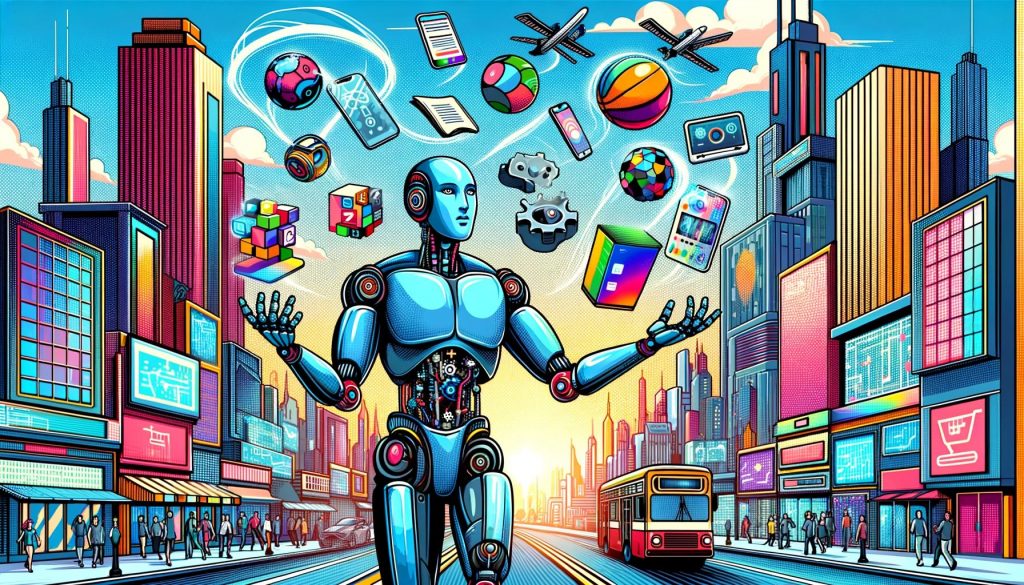
In 2024, we are witnessing a significant shift in the AI landscape with the rise of multimodal models. Unlike traditional models that focus on a single type of data, multimodal models integrate various data types – text, images, audio, and video – to produce more comprehensive and versatile AI applications.
Historically, AI models like OpenAI’s Dall-E have shown us the potential of converting text inputs into visual outputs. Now, the field is advancing with models like Google’s Gemini, which exemplifies the future of AI by training on and generating multiple data types simultaneously.
The implications of these advancements are vast and varied. For instance, combining speech, text, and images in healthcare could lead to more accurate disease diagnoses. Experts suggest that multimodal models will become standard in everyday practices as their potential to enable advanced applications is immense.
Large language models like GPT4 and Meta’s Llama 2 have already pushed the boundaries. Now, with the emergence of multimodal AI, the technology is expanding to include mixed content based on text, audio, image, and video.
The introduction of open models like the Large Language and Vision Assistant (LLava) holds exciting possibilities.
Small, Powerful Language Models (SLMs) Will Be in Vogue

Another trend to watch out for in 2024 is the paradigm shift towards Small Language Models (SLMs). With most current-gen LLMs boasting billions of parameters, the focus has parallelly also shifted toward more efficient, manageable Small Language Models (SLMs). Microsoft’s PHI-2 and Mistral 7B are notable examples.
SLMs are redefining what constitutes a powerful language model. Typically, models under 100 million parameters are classified as SLMs, a stark contrast to the behemoths exceeding 100 billion parameters. Some SLMs are even streamlined to as few as 1 million parameters.
SLMs offer compelling advantages in efficiency, cost, and customizability. Their smaller size translates to faster inference speeds, reduced memory requirements, and fewer computational resources. This efficiency cascades into significant cost savings. For example, developing GPT-3 cost tens of millions of dollars, while SLMs can be developed and deployed at a fraction of this cost.
SLMs shine in specialized domains, such as finance and entertainment, where custom language models can yield direct business value. In finance, SLMs can classify transactions, analyze sentiment in transcripts, and systematize unstructured data. For entertainment businesses, they assist in scriptwriting, enhance interactive gaming experiences, and enrich metadata for recommendation systems.
Platforms like Hugging Face are democratizing the development of custom SLMs, enabling businesses to tailor models to their specific needs. The flexibility and efficiency of SLMs allow for rapid iteration and adaptation to niche requirements.
The Emergence of Autonomous AI Agents
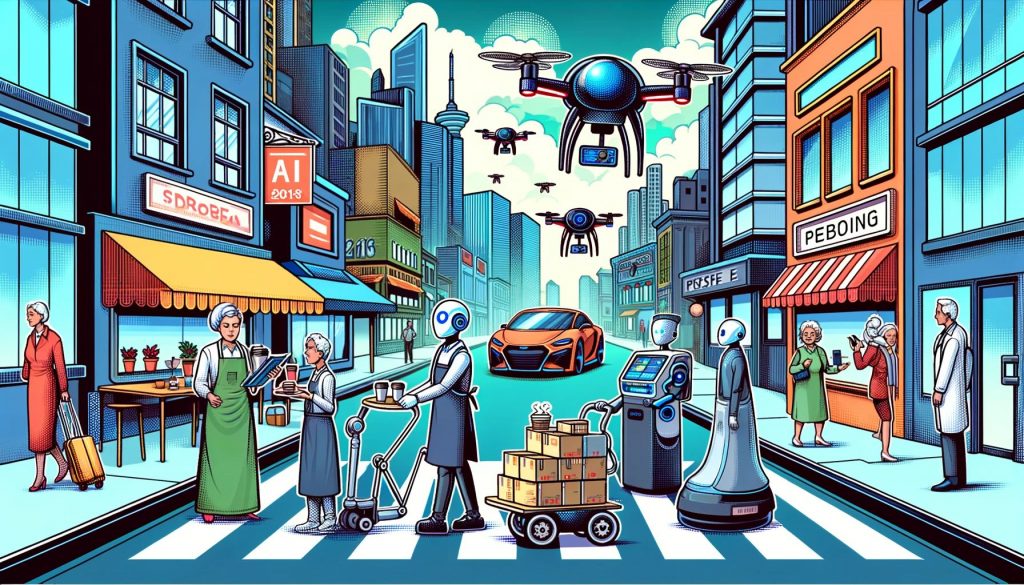
Autonomous AI agents are another frontier to keep an eye on in 2024. These agents, autonomous software programs, are designed to achieve specific objectives with minimal human intervention. Their ability to generate content autonomously represents a significant leap from traditional prompt-based AI systems.
Autonomous agents learn from data, adapt to new situations, and make decisions independently. OpenAI’s custom GPTs exemplify this progression in AI, highlighting how these agents operate effectively without constant human guidance.
Frameworks such as LangChain and LlamaIndex, which are based on large language models (LLMs), have been instrumental in building these agents. In 2024, we expect to see new frameworks that further harness the power of multimodal AI, enhancing the capabilities of autonomous agents.
Autonomous agents promise to significantly improve customer experiences across various industries. In sectors like travel, hospitality, retail, and education, these agents can reduce costs by minimizing the need for human intervention. Their contextualized responses and actions make them particularly valuable in these settings.
Looking ahead, we anticipate a generation of autonomous agents capable of interpreting higher-level intentions and executing a series of sub-actions on behalf of the user. This evolution will lead to AI systems that understand the intent behind prompts more accurately.
Open-Source Models Will Compete with Proprietary Models

In 2024, open-source AI models are expected to achieve significant advancements, potentially rivaling their proprietary counterparts. The comparison between open and proprietary AI models, however, is multifaceted, hinging on factors like specific use cases, development resources, and the nature of the training data.
In 2023, certain open models like Meta’s Llama 2 70B, Falcon 180B, and Mistral AI’s Mixtral-8x7B garnered widespread attention. Their performance, often comparable to that of proprietary models such as GPT 3.5, Claude 2, and Jurassic-2, marked a significant shift in the AI landscape. These developments indicate a closing gap between open and proprietary models in terms of capabilities and applications.
The future trajectory suggests a continued narrowing of this gap. Open models are increasingly seen as viable options for enterprises, especially those looking for solutions in hybrid or on-premises environments. The flexibility and accessibility of open models make them particularly attractive, offering an alternative to the more restricted proprietary models.
As we move through 2024, we anticipate new releases from Meta, Mistral, and other emerging players in the AI field that will further bridge the gap with proprietary models. The availability of these advanced open models as APIs will catalyze their adoption and integration into various business processes and applications.
Transition from Cloud to On-Device AI
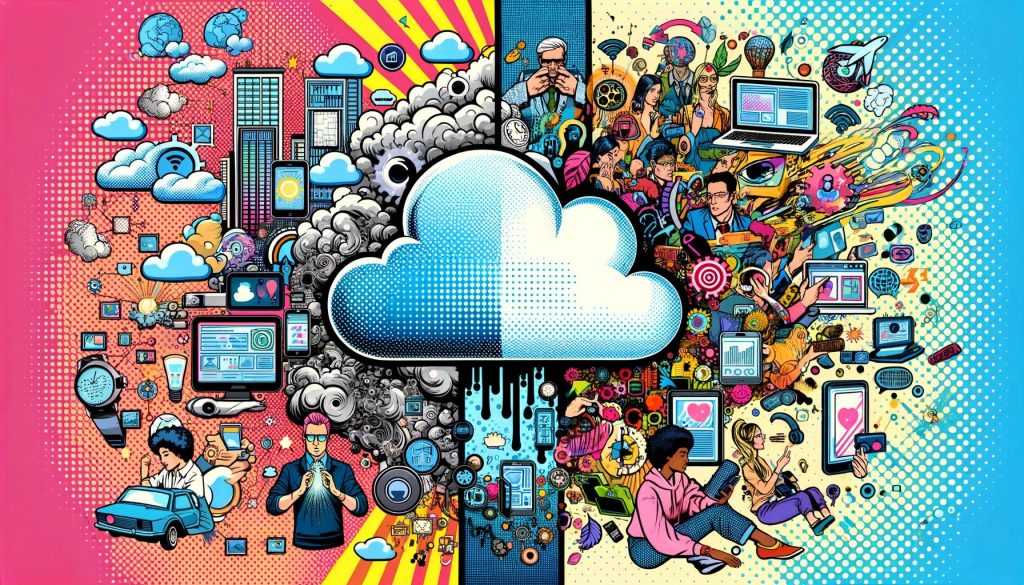
In 2024, the generative AI landscape is shifting from cloud-centric to personal devices. This move is driven by the need to address privacy concerns, reduce latency, and cut costs. We expect personal devices like smartphones, PCs, vehicles, and IoT devices will become central to multimodal generative AI models.
This transition is not just about enhancing privacy and personalization but also about expanding access to these capabilities for consumers and enterprises. By running large generative AI multimodal models on local devices, there is a shift from cloud-based systems to hybrid or on-device AI. This change is inevitable as it offers next-level privacy-focused, personalized AI experiences, reducing cloud costs for developers.
Smartphones will be able to use multimodal generative AI models combined with on-device sensor data. These AI assistants, equipped with the ability to process and generate text, voice, images, and even videos on-device, promise a more natural engagement and next-level user experience.
AI PCs “Super Cycle”
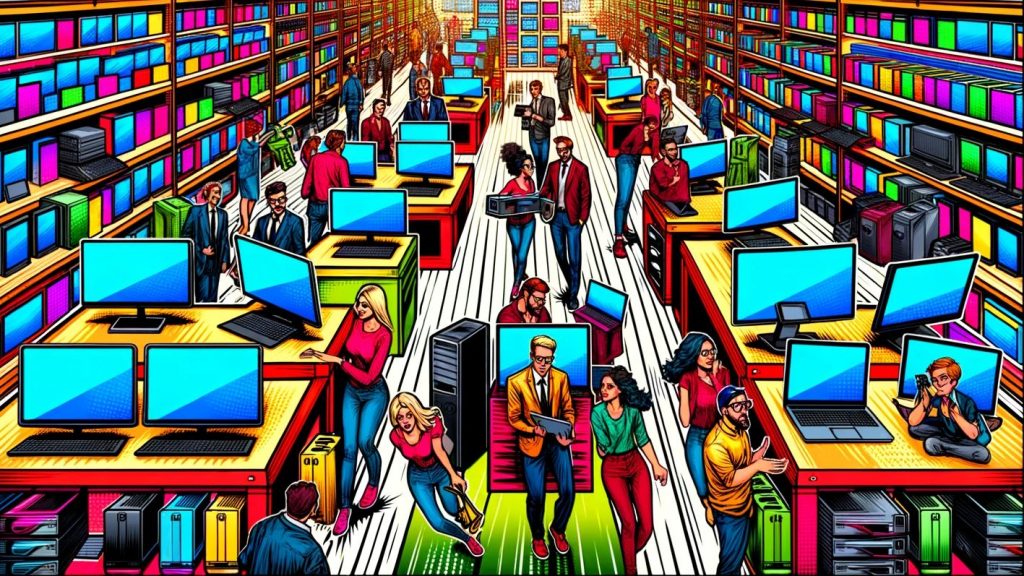
2024 is poised to be a transformative year for the PC market, driven by a “super cycle” of laptop and PC replacements catalyzed by AI advancements. This surge is supported by Microsoft’s development of Intelligent PC and AI assistants like Copilot, indicating a substantial shift towards AI-integrated computing.
AMD and Intel have announced AI-enabled processors, with AMD’s Ryzen 8040 and Intel’s Ultra Core processors featuring an integrated neural processing unit (NPU) designed for efficient data processing and machine learning tasks.
These processors enable power-efficient AI acceleration by distributing tasks across CPU, GPU, and NPU. Qualcomm is also joining the race with its Snapdragon X Elite processor, capable of running generative AI models on-device. Microsoft’s anticipated release of a Windows version optimized for local AI processing will further catalyze this shift.
Analysts predict that AI PCs will not only revive PC sales but also elevate the average selling price for PCs. With an installed base of 1.5 billion PCs globally, the market potential is immense. AI PCs are expected to offer new experiences, including personalized assistance, and running GenAI applications using smaller data sets.
For enterprises, this means running GenAI models with proprietary data locally for enhanced security. For consumers, it translates to more interactive experiences like real-time language translation and more lifelike nonplayable characters in video games.
Generative Art/Design Will Get Better

In 2024, Generative AI is set to play a key role in enhancing productivity, reducing time-to-market, and improving efficiency for creative folk. This technology is not about replacing human creativity but augmenting and enhancing it. By freeing up time from repetitive tasks, teams can focus more on strategy and creative collaboration.
With access to more advanced image, audio, and video generation tools, creatives and marketers can effectively tailor content according to audience preferences. This will revolutionize the way marketers approach their campaigns, ushering in a new era of advertising.
The field of design, particularly for physical products and services, is another area where generative AI is rapidly being adopted. Generative design tools, increasingly incorporated into platforms like Autodesk, enable designers to input requirements and materials to receive blueprints and recipes. This approach facilitates the rapid generation of multiple prototypes, testing digital twins in parallel, and leads to more robust, effective, or sustainable product designs.
By automating the initial stages of the design process, generative AI allows designers to explore a wider range of possibilities and focus on refining the best options.
The Rise of Mixed, Virtual, and Extended Reality Experiences

2024 could be a watershed year for mixed reality (MR), virtual reality (VR), and extended reality (XR) as these technologies transition from niche to mainstream.
These fields are undergoing rapid progress, driven by the adoption of mixed reality capabilities, smaller device sizes, and advancements in spatial computing. This transition is being helped along by affordable hardware options like Meta’s Quest 3 and Ray Ban Meta.
GenAI tools will help in enhancing and scaling XR experiences, making the generation of three-dimensional (3D) content more accessible. This means that more creators and developers will have the tools to craft immersive and intricate virtual worlds, regardless of their technical expertise or resources.
Voice interfaces, powered by generative AI, are poised to provide a more natural and intuitive mode of interaction within XR environments. Furthermore, the use of personal assistants and lifelike 3D avatars, also driven by generative AI technology, will become increasingly common in XR spaces.
The Age of Bring Your Own AI (BYOAI)
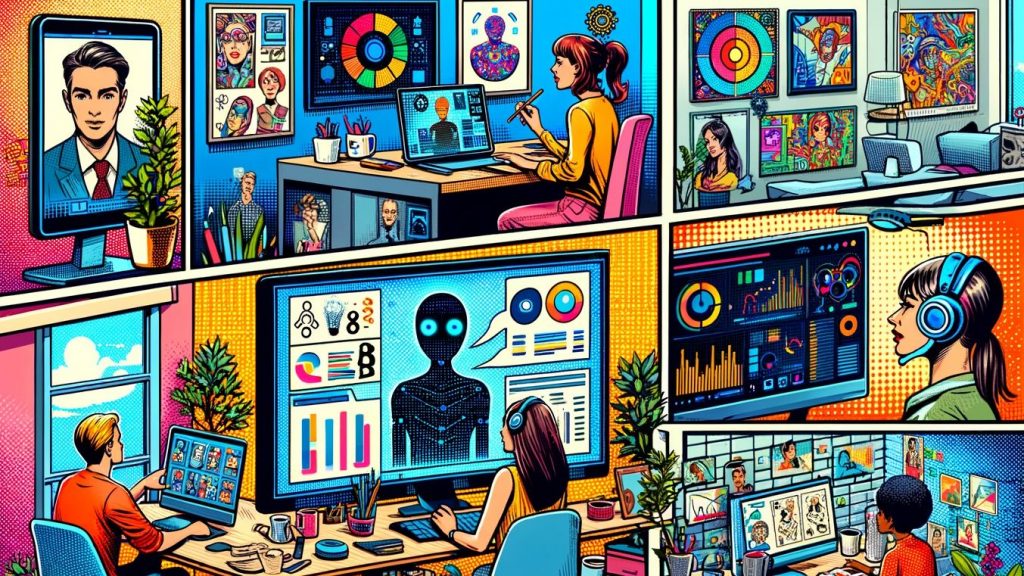
Initially, companies like Samsung, JPMorgan Chase, Apple, and even Microsoft were hesitant, limiting employee access to ChatGPT due to concerns about training data and potential internal data breaches. However, this year is likely to see a more open attitude towards generative AI in the workplace. The realization that a sizable proportion of employees are already experimenting with AI in their professional and personal lives is driving this change.
A key trend emerging in this context is the concept of “bring your own AI” (BYOAI). This phenomenon involves employees using various mainstream or experimental AI services, such as ChatGPT, Dall-E, or other AI-embedded software, to enhance their productivity in business tasks. Enterprises are increasingly recognizing the need to invest in AI and encourage its safe use among employees.
An illustrative example of this trend is seen in the practices of the British multinational oil and gas giant BP. The company is actively infusing generative and classic AI technology into its culture with an ethos of “AI for everyone.” For example, the company uses AI to enhance software engineering processes, enabling a single engineer to review code for a larger number of colleagues.
The idea is to empower employees, citizen developers, and citizens regardless of their technical expertise, to build, publish, share, and reuse their own AI tools. The lower barriers to entry with technologies like LLMs and generative AI are making this level of democratization more feasible than ever.
Conclusion
2023’s GenAI advancements dazzled us, but 2024? It is rewriting our reality.
This year, generative AI is not just a trend – it is poised to be a ground-up evolution changing how we work and live. Think of it as AI’s leap from scribbling notes to painting masterpieces.
From powerful mini-models in our pockets to AI colleagues in the office, 2024 is the year when we’ll look back and say, “That changed everything.”
Want to Streamline Insurance Workflows With AI?
If you’d like to find out how Scribble Data helps insurance companies streamline their enterprise workflows, talk to our team today!



